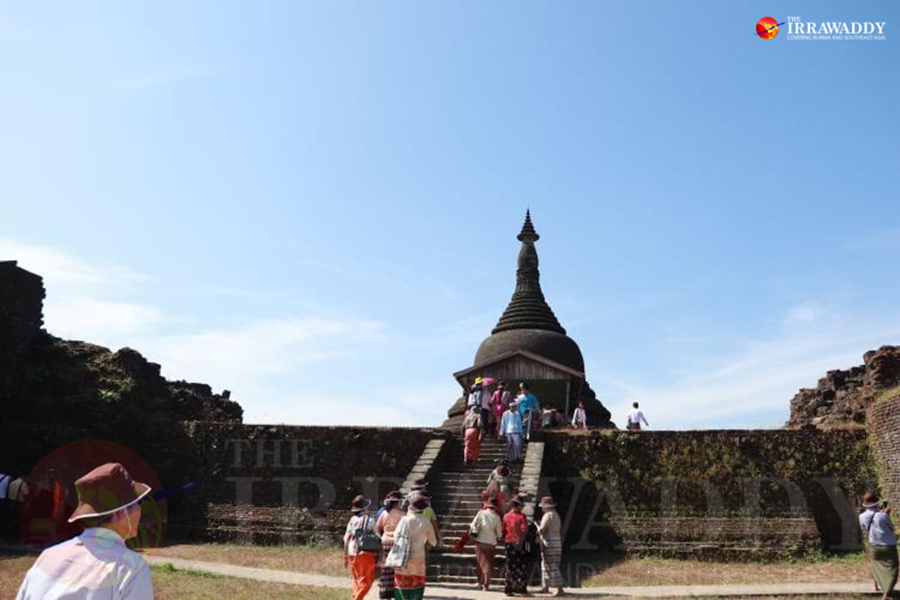SITTWE, Rakhine State — A woman was injured and a historic pagoda was raked by artillery fire Friday during fighting between the Myanmar military and rebel Arakan Army, according to a local official and a community elder.
U Oo Tun Hlaing, a community elder in Mrauk-U Township, told The Irrawaddy that a 40-year-old woman from Kyauk-Risk-Kay Ward was hit by shell fragments and sent a local hospital for treatment.
“I heard that about 30 [military] soldiers came near the town [on Friday evening]. Shell pieces fell near Tukkathein and Shikthaung pagodas, and parts of the shells fell on the roofs of monasteries and houses. Locals are frightened and they dare not sleep in their homes at night,” he said.
U Than Htike, director of the Mrauk-U branch of the National Museum and Library Ministry’s archaeology department, said the shelling also damaged the historic Mye Hte Pagoda and the security gate of a cultural conservation zone near Tukkathein Pagoda.
He warned that the ongoing fighting risked destroying the heritage of the ancient capital of the Arakanese kingdom and hindered the government’s plans to get Mrauk-U on the UNESCO World Heritage Lite.
Daw Khin Than, who chairs a government-backed heritage group in Mrauk-U, said it was disappointing to see the people of Myanmar damaging their own heritage.
“It was lucky that the artillery shells flew over Tukkathein Pagoda, otherwise Shitthaung and Tukkathein would have been hit by the artillery shells. The security gate was riddled with holes. It would be sad if such shelling continued. Heritage cannot be replaced,” she said.

U Than Htike said it was hard to tell who fired the shells.
“As there are two armed groups, we don’t know which side is responsible for this. We reported the case to senior authorities,” he said.
Brig. Gen. Zaw Min Tun, spokesman for the military’s True News Information Team, could not be reached for comment.
Mrauk-U lies along the Kaladan River in northern Rakhine about 60 km inland from the state capital, Sittwe.
From the 15th century to the late 1800s, it was the seat of Arakanese kings, who at the height of their power controlled an area covering much of eastern Bengal, modern-day Rakhine State and the western part of lower Myanmar. Many of the city’s remains are well-preserved and some 380 historic temples are scattered between the lush hills.
Since 2014 the Culture Ministry has been mapping the area digitally and conducting preservation work of the temples and palace grounds.
Communal violence between the Arakanese Buddhist and Rohingya Muslim populations in the region in mid-2012 has driven down tourist numbers. Following the violence, authorities closed the old city to tourists from abroad. Although the ban was lifted after several months, the area has seen only a trickle of visitors since.
in 2017 three ancient Pyu cities became the first sites in Myanmar to be recognized by UNESCO. The government has also nominated Bagan for the same status.
Translated from Burmese by Thet Ko Ko.

















